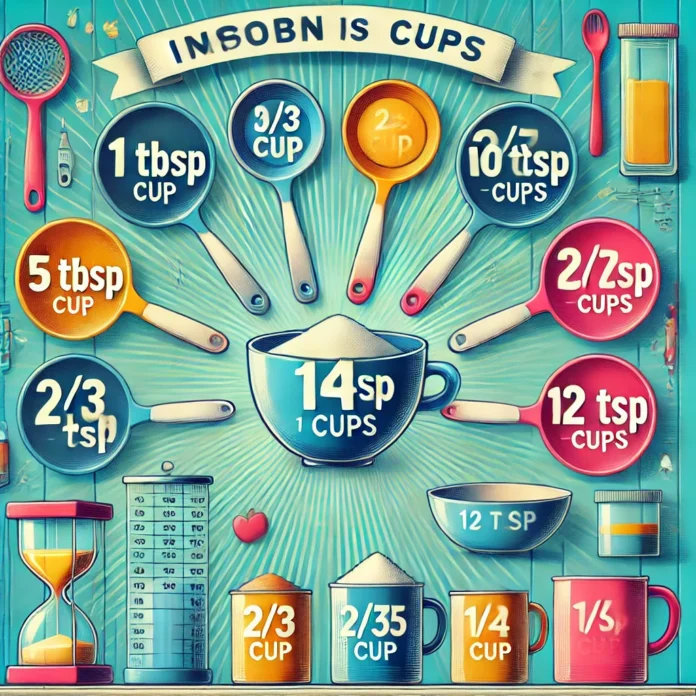14 Tablespoons to Cups
Converting 14 tablespoons to cups is a straightforward yet vital kitchen task that ensures your recipes turn out perfect every time. This seemingly simple conversion can have broader implications on how you measure ingredients accurately, maintain consistency, and prevent waste.
Understanding the Conversion: 14 Tablespoons to Cups
Let’s start with the basics. A standard tablespoon in the United States equals 1/16 of a cup. Therefore, 14 tablespoons equal 0.875 cups, or just shy of a full cup. While it’s easy to approximate, precise measurements are crucial in baking and cooking.
Effects of Incorrect Measurements
In the culinary world, small inaccuracies can lead to:
- Ruined Recipes: Improper ratios can affect taste and texture.
- Ingredient Waste: Over- or under-measuring can lead to excess leftovers.
- Nutritional Miscalculations: Especially relevant for calorie-sensitive diets.
Pros and Cons of Converting Measurements
Pros:
- Consistency in Recipes: Ensures identical results every time.
- Global Usability: Bridges gaps between metric and imperial systems.
- Reduced Waste: Precise amounts prevent overuse of ingredients.
Cons:
- Time-Consuming: Frequent conversions can slow down cooking.
- Potential for Errors: Misinterpretation or rounding mistakes can occur.
- Dependence on Tools: Accurate conversions often require measuring tools.
Companion Measurements and Comparisons
When working with tablespoons and cups, understanding related conversions can simplify your cooking process.
- How Many Tbsp in 1/3 Cup?
- There are 5 tablespoons and 1 teaspoon in 1/3 cup.
- How Many Tablespoons Are in a Cup?
- One cup contains exactly 16 tablespoons.
- How Many Tbsp in 2/3 Cup?
- 2/3 cup equals 10 tablespoons and 2 teaspoons.
- How Many Tablespoons in 3/4 Cup?
- 3/4 cup is equivalent to 12 tablespoons.
- How Much Is 4 Tablespoons in Cups?
- 4 tablespoons equal 1/4 cup.
Differences and Similarities in Measurement Standards
| Aspect | US Tablespoon | UK Tablespoon | Australian Tablespoon |
|---|---|---|---|
| Volume | 14.79 ml | 15 ml | 20 ml |
| Common Usage | Recipes, beverages | Recipes, beverages | Recipes, beverages |
| Conversion to Cups | 16 tbsp = 1 cup | 16 tbsp = 1 cup | 12.5 tbsp = 1 cup |
Key Takeaway: Ensure you’re aware of regional variations to avoid errors.
Market Value and Its Worth
Accurate measurement tools for 14 tablespoons to cups, such as measuring cups and spoons, play a vital role in every kitchen. The market for these tools is valued at billions globally, with high demand due to the rise of home cooking and baking trends.
| Tool Type | Cost Range | Features |
| Measuring Cups | $5 – $50 | Plastic, stainless steel, stackable |
| Measuring Spoons | $3 – $30 | Nesting, magnetic, dishwasher safe |
| Digital Scales | $10 – $100 | Precise, multi-unit conversions |
Cost and Expenses: Are Precision Tools Worth It?
Investing in high-quality measuring tools can:
- Save Money: Prevents over-purchasing ingredients.
- Save Time: Speeds up cooking with accurate measures.
- Improve Results: Better control over consistency.
Tables and Charts for Visual Learners
Conversion Table: Tablespoons to Cups
| Tablespoons | Cups |
| 1 tbsp | 0.0625 cups |
| 2 tbsp | 0.125 cups |
| 4 tbsp | 0.25 cups |
| 8 tbsp | 0.5 cups |
| 14 tbsp | 0.875 cups |
| 16 tbsp | 1 cup |
Pie Chart: Common Kitchen Measurement Usage
We can represent kitchen measurement usage in a pie chart, with approximate percentages:
- Tablespoons: 40%
- Cups: 35%
- Teaspoons: 20%
- Others: 5%
FAQs
Q1: How many tablespoons are in 1/3 cup?
A: There are 5 tablespoons and 1 teaspoon in 1/3 cup.
Q2: What is 14 tablespoons in cups?
A: It equals 0.875 cups.
Q3: How many tablespoons in 3/4 cup?
A: There are 12 tablespoons in 3/4 cup.
Q4: Is there a difference in tablespoon sizes globally?
A: Yes, US tablespoons measure 14.79 ml, UK tablespoons are 15 ml, and Australian tablespoons are 20 ml.
Q5: How much is 4 tablespoons in cups?
A: 4 tablespoons equal 1/4 cup.
Mastering measurements like 14 tablespoons to cups empowers you to create delicious dishes with confidence and precision. Use the provided charts, comparisons, and FAQs as handy references to improve your cooking outcomes.
